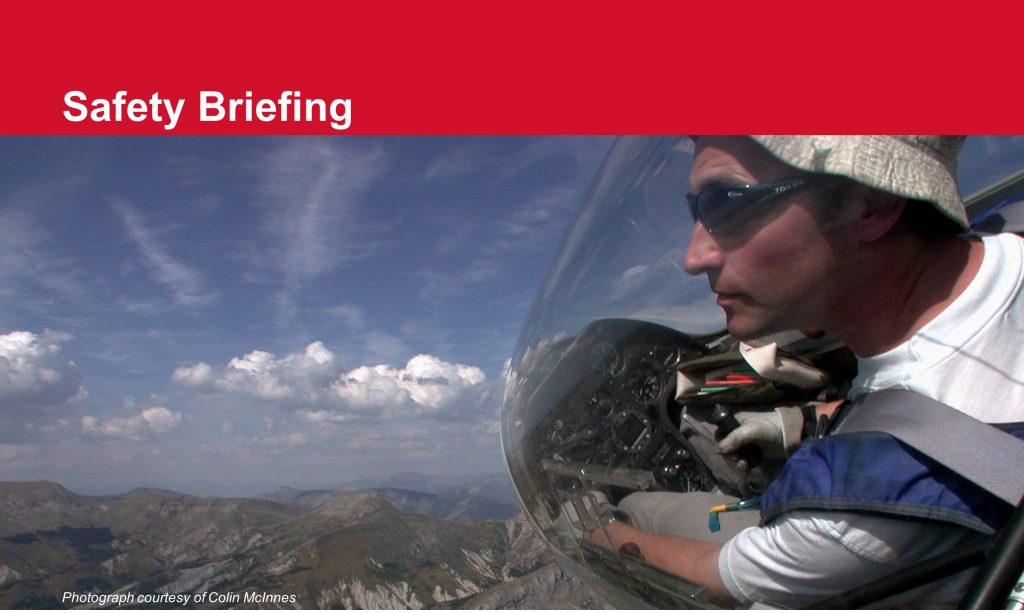Managing Flying Risk – Soaring Protocol
The soaring protocol aims to describe known good practice based on many decades of hard-learned experience. It does not replace the need to comply with the rules of the air and the ANO.
There is a pdf version of the Soaring Protocol available here.
Joining a thermal- Gliders already established in a thermal have the right of way.
- All pilots shall circle in the same direction as any glider(s) already established in lift.
- If there are gliders thermalling in opposite directions, the joining gliders shall turn in the same direction as the nearest glider (least vertical separation).
- The entry to the turn should be planned to retain continual visual contact with all other aircraft at or near the planned entry height, and to ensure no glider already turning will be required to manoeuvre to avoid the joining glider.
- If possible, join the same circular track as the other glider, or if that is not practical, join a circle wider than that of the thermalling glider and only move onto that glider’s circle when you can achieve safe separation.
- Lookout is always paramount. Never allow your monitoring of in-cockpit equipment to interfere with your lookout. Maintain visual contact with established gliders and position your glider so established pilots can see your glider.
- When at a similar level to another glider, never turn inside or point your glider at or ahead of the other glider unless you can guarantee safe separation and maintain visual contact.
- If you lose visual contact with a nearby glider or if you cannot guarantee safe separation, leave the thermal.
- Look out for other aircraft joining or converging in height.
- Look outside the turn and behind before straightening up. Do not manoeuvre sharply unless clear of all other aircraft.
- Where reasonably possible, remain 500′ clear of people and property.
- Do not fly lower than necessary to utilise the soaring conditions
- NEVER fly close to, towards or directly over any person on the ground.
- Lookout is always paramount.
- Remain clear of other aircraft. The glider with the ridge on the right has priority.
- Overtake with caution, bearing in mind the other glider could suddenly change direction.
- Make all turns away from the ridge.
- Be aware that when flying with a significant drift angle, FLARM direction indications can be misleading.
- Always have an available safe landing option.
